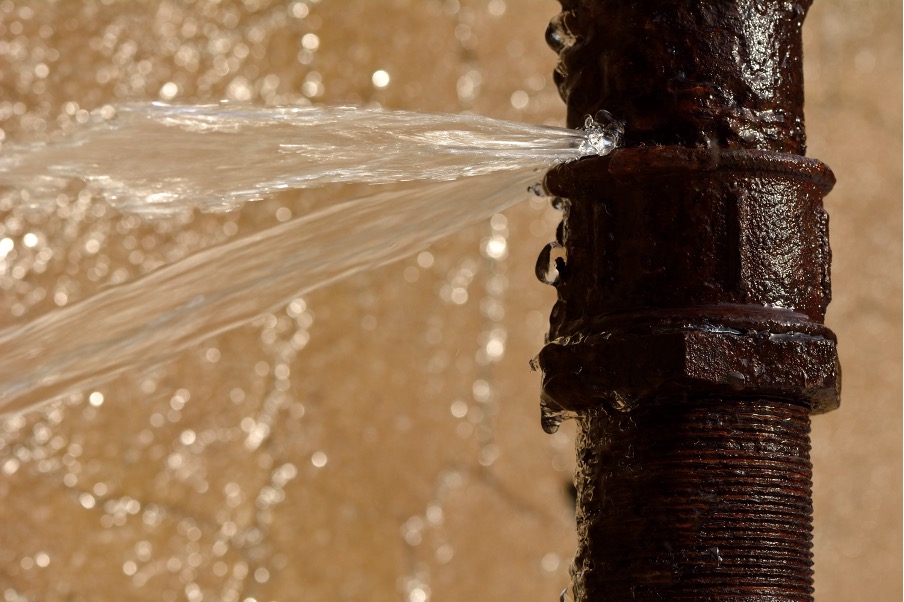Guide To Water Leakage Detection At Home
Guide To Water Leakage Detection At Home
Blog Article
We have stumbled on this great article pertaining to Leaking water lines down the page on the web and accepted it made perfect sense to relate it with you on this page.

The minute you locate a leakage, calling your plumber for fixings is the most effective solution. Nonetheless, some little water leakages might not show up. Here are some hacks that aid if you can not find it with your nude eyes.
Early detection of dripping water lines can alleviate a potential disaster. Besides conserving you money, it will certainly lessen the irritation as well as frustration.
Inspect Water Consumption
If you find unexpected changes, regardless of your consumption being the same, it indicates that you have leakages in your plumbing system. An abrupt spike in your expense indicates a fast-moving leakage.
A consistent rise every month, also with the exact same practices, shows you have a slow leak that's likewise slowly escalating. Call a plumber to completely check your home, especially if you really feel a cozy area on your floor with piping below.
Analyze the circumstance as well as inspect
Homeowners must make it a behavior to check under the sink counters as well as even inside cabinets for any kind of bad odor or mold growth. These two red flags suggest a leakage so prompt focus is required. Doing routine assessments, even bi-annually, can save you from a significant problem.
Analyze the Water Meter
Examining it is a guaranteed means that assists you find leakages. If it moves, that shows a fast-moving leakage. This suggests you may have a slow leakage that can even be below ground.
Asses Exterior Lines
Don't fail to remember to inspect your outdoor water lines as well. Ought to water leak out of the link, you have a loose rubber gasket. One small leak can lose tons of water and spike your water costs.
Do a Food Coloring Examination
When it involves water usage, 30% originates from bathrooms. Test to see if they are running correctly. Drop flecks of food shade in the storage tank as well as wait 10 mins. If the color in some way infiltrates your bowl during that time without flushing, there's a leakage between the container and also bowl.
Check for stainings as well as damaging as the majority of pipelines and devices have a life span. If you believe leaking water lines in your plumbing system, don't wait for it to intensify.
The minute you find a leak, calling your plumber for fixings is the best option. Some small water leakages may not be visible. Checking it is a proven method that aids you find leakages. One small leak can throw away tons of water and also increase your water costs.
If you suspect dripping water lines in your plumbing system, don't wait for it to intensify.
How to Know If Your Home Has a Hidden Leak
Water Meter Reveals Inexplicable Water Usage
If you’d like to test whether or not there’s a leak somewhere in your home, you can do this using your water meter. Here is how to conduct the test:
Don’t use any water in your home for at least 30 minutes; this also means not turning on faucets or water-using appliances.
Go outside, and check your water meter for activity.
If your water meter shows that there was activity, even though no one was using any water, this proves that there is a leak in your home.Visible Mold or Mildew Growth
Leaks behind walls create moist, dark environments that allow mold and mildew to grow and thrive. Eventually, you might see mold growth forming on the wall closest to a hidden leak.
If mold is growing in an area that receives a high amount of moisture, such as a bathroom, it may simply be an indication that better ventilation is needed. However, if you see mold growth on a wall or the ceiling in an area where you would not expect, you probably have a hidden leak.
Musty, Mildew Odor
Sometimes you might not be able to see the mold or mildew that is growing as a result of a leak. However, the smell can give the problem away just as easily. If you catch a whiff of something musty, there’s a good chance that old water is collecting somewhere in your home that you can’t see.
Stained/Warped Walls, Ceilings, or Floors
When your home soaks up water, a variety of red flags can become visible, including ceiling stains, bubbling drywall, warped walls, and sagging floors. While these issues can be caused by excess humidity, they can also be signs that a pipe or plumbing connection has started leaking behind your walls.
Inexplicably High Water Bill
After a while, you get a general sense for what your water bill should be. If you own a pool or sprinkler system, your bill will tend to be higher during summer. However, if you receive a water bill that seems especially high, and you can’t figure out what caused it, then you may have a hidden leak somewhere that’s increasing your bill.
https://www.plumbingjoint.com/blog/2019/july/how-to-know-if-your-home-has-a-hidden-leak/
.jpg)
We hope you enjoyed our part about Detecting hidden plumbing leaks. Thanks for taking time to read our posting. Are you aware of anybody else who is interested by the subject? Why not share it. We love reading our article about Locating water leaks.
Report this page